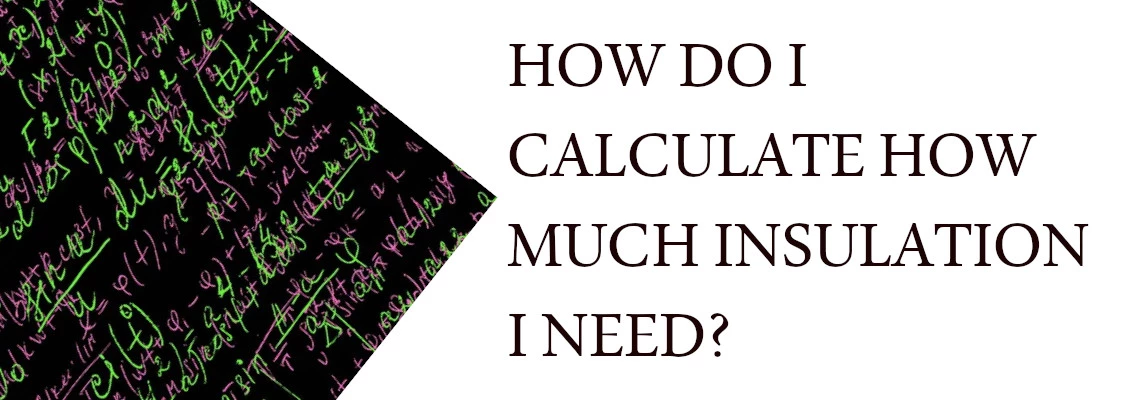
INSULATION CALCULATION FORMULA MADE EASY: A BEGINNER'S HANDBOOK*
Once you've decided how thick your insulation should be, the next step is buying it. Sounds easy, right? Well, here's the catch: different insulations come in different pack sizes and, most importantly, different dimensions. You'll probably need to buy more of the smaller 600mm x 1200mm insulation boards compared to the larger 1200mm x 2400mm ones. It's pretty clear, but it can be tricky for some people when they're shopping for insulation.
This article will help you figure out how much insulation you'll need for your project and how to buy just the right amount so you don't end up with a bunch of leftover boards. We'll explain in simple terms how to calculate the insulation needed for your floor, walls, ceiling, and attic. And the best part? You'll learn how to do it all for free without needing calculators. So, take five minutes to read through this article, and you'll be sure to buy your insulation with confidence.
WHAT IS THE FORMULA FOR CALCULATING INSULATION?
The formula for calculating the required amount of thermal insulation involves finding the optimal square meterage of insulation coverage to cover the actual surface area, taking into account cuts and wastage. Therefore, to calculate the amount of insulation needed for your home, you need to consider approximately 10% wastage, which is what will be left after its installation and what you'll need to purchase additionally. A smart way to purchase insulation is by rounding your surface area to the nearest full package size. This means if you need to cover, say, 10m² and the insulation package covers 12m², it makes sense to buy that package since it already accounts for waste.
For purely economic reasons, it's never advisable to round down the required insulation to match a smaller package size. If you end up buying no enough insulation, it will result in having to pay for delivery costs, which can sometimes exceed the cost of the insulation itself. It's better to have a bit extra, as you can always easily sell the surplus on platforms like eBay, right? Even if you have to sell the excess for half the price, you'll still come out ahead. It's important to always have some extra insulation to avoid additional delivery costs.
Also, keep in mind that if you need to buy an extra pack of insulation, getting it delivered might be tricky. Suppliers might not find it worth sending a truck just for one pack. So, you might end up having to go get it yourself, which means spending time and money on petrol.
HOW DO I CALCULATE HOW MUCH INSULATION I NEED?
To calculate the amount of thermal insulation needed, you need to base it on the square meterage of the area requiring insulation, taking into account its single layer of thermal material. This means if you want to use insulation 200mm thick and insulate 100m², you'll need 100m² of insulation. However, if you opt for insulation 100mm thick and achieve the same thermal insulation effects, you'll need twice the area of that insulation, so 200m².
So, if you decide to purchase insulation of a single thickness, you'll need as many square metres of insulation as the area requires. However, in practice, our clients often buy an extra board or pack of insulation.
To know how many square metres you need, you'll have to measure the width and height for walls, width and length for ceilings and floors, and for a loft, add up all these individual areas. You can do this using a tape measure or a laser measuring device, readily available at stores like B&Q or Wickes.
HOW DO YOU WORK OUT INSULATION PRICE PER M2?
Many architects in the UK price building materials based on their coverage per square meter. Imagine if all materials had dimensions of 1m x 1m and covered exactly 1m². Unfortunately, reality is more complex. Most building materials have different coverage areas. For example, cavity wall insulation, due to the height of breeze blocks, might have a size of 450mm x 1200mm, while more universal rigid PIR boards like Celotex typically come in standard sizes of 8'x4' (2400mm x 1200mm).
Often, these boards are sold individually or, worse, in packs. So, how do you determine their price per square metre?
To find out how much one square metre of coverage costs, for instance, for Celotex boards, you divide their unit price by their coverage area.
EXAMPLES OF SQUARE METRE INSULATION PRICE
SINGLE CELOTEX RIGID BOARD EXAMPLE (2400mm x 1200mm)
 Let's say a Celotex PIR board costs £50, and its dimensions are 2400mm x 1200mm. Its total coverage area is therefore 2.88m² (2.4 x 1.2). So, by purchasing one board for £50, you'll get 2.88m².
Let's say a Celotex PIR board costs £50, and its dimensions are 2400mm x 1200mm. Its total coverage area is therefore 2.88m² (2.4 x 1.2). So, by purchasing one board for £50, you'll get 2.88m².
To see how much one square metre of Celotex board costs, you divide its price by its coverage area, i.e., £50/2.88 = £17.36.
As you can see, the price per square metre of the Celotex board in this case would be £17.36.
PACKS OF CELOTEX RIGID BOARD INSULATION EXAMPLE (2400mm x 1200mm)x12
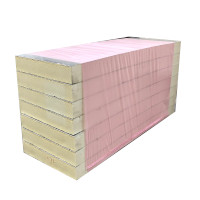 Some PIR insulation boards, especially the thicker ones, are sold in packs rather than individually. Therefore, you can't buy them separately. So, how do you calculate the cost per square metre if they are packaged in sets?
Some PIR insulation boards, especially the thicker ones, are sold in packs rather than individually. Therefore, you can't buy them separately. So, how do you calculate the cost per square metre if they are packaged in sets?
To calculate the cost per square metre of a board sold in a pack, you divide the price of the entire pack by the total coverage area of all the boards in that pack.
Let's assume a pack of Celotex boards costs £1320.90, and there are 12 boards in the pack. From the calculation, we get:
12 * 2.88 = 34.56m²
Dividing £1320.90 by 34.56, we get approximately £38 per square metre.
LOFT ROLL INSULATION EXAMPLE (8000mm x 1140mm)
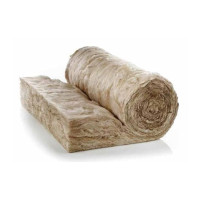 Insulation rolls for attic insulation typically come in lengths ranging from 8000mm to 14000mm when unrolled, with a width usually around 1140mm.
Insulation rolls for attic insulation typically come in lengths ranging from 8000mm to 14000mm when unrolled, with a width usually around 1140mm.
Let's take an example of an attic insulation roll measuring 8000mm x 1140mm. We can do a simple calculation: 8 * 1.14 = 9.12m² of coverage. If the entire roll costs £33, we divide £33 by its coverage area using the formula: £33 / 9.12 = £3.61. So, the cost per square meter of such a roll is £3.61.
EPS EXPANDED POLYSTYRENE INSULATION EXAMPLE (600mm x1200mm)
 The dimensions of EPS foam boards are typically 2400mm x 1200mm, 500mm x 1000mm, or 600mm x 1200mm. Let's focus on the last one, which is 600mm x 1200mm.
The dimensions of EPS foam boards are typically 2400mm x 1200mm, 500mm x 1000mm, or 600mm x 1200mm. Let's focus on the last one, which is 600mm x 1200mm.
If you want to find out how much one square metre of polystyrene costs, multiply its width by its length. That is, 0.6 * 1.2 = 0.72m².
Let's assume that one board of these dimensions costs £3.66, so £3.66 / 0.72 = £5.08. Therefore, the cost of one square metre of such a board would be £5.08.
PACKS OF MINERAL WOOL ACOUSTIC SLABS EXAMPLE (1200mm x 600mm)x8
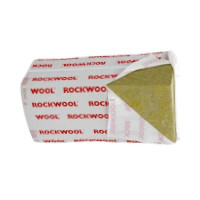 Acoustic slabs like Rockwool RWA45 or Knauf RS45 come in dimensions of 1200mm x 600mm and are also packaged in packs containing several pieces. The coverage area of one board is 1.2 * 0.6 = 0.72m². Assuming that a certain thickness is packed in sets of 8 boards per pack, we get 8 * 0.72 = 5.76m² of coverage from the entire pack. The entire pack costs £47.24.
Acoustic slabs like Rockwool RWA45 or Knauf RS45 come in dimensions of 1200mm x 600mm and are also packaged in packs containing several pieces. The coverage area of one board is 1.2 * 0.6 = 0.72m². Assuming that a certain thickness is packed in sets of 8 boards per pack, we get 8 * 0.72 = 5.76m² of coverage from the entire pack. The entire pack costs £47.24.
To find out how much one square metre of coverage of such a slab costs, you need to divide the price of the pack by its coverage area, which is £47.24 / 5.76m² = £8.20. Therefore, one square metre of coverage of acoustic slabs would cost £8.20.
HOW MANY INSULATION BOARDS DO I NEED ? | CALCULATOR
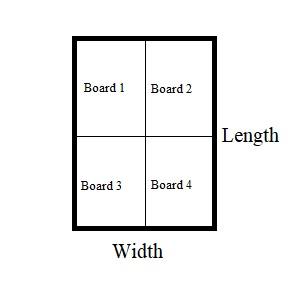 It turns out that about 20% of our customers aren't sure exactly how many boards they need to thermally insulate, say, a floor. Generally, online calculators would be handy in these cases if it weren't for the hassle of entering an email or subscribing to a newsletter. So, the best way seems to be quickly doing it yourself.
It turns out that about 20% of our customers aren't sure exactly how many boards they need to thermally insulate, say, a floor. Generally, online calculators would be handy in these cases if it weren't for the hassle of entering an email or subscribing to a newsletter. So, the best way seems to be quickly doing it yourself.
The formula for calculating how many boards you need is extremely simple: just multiply the width and length of the floor, then divide the result by the coverage area of one board. The result obtained should be rounded up to the nearest whole number of boards. Similarly, you'd proceed with walls, ceilings, or roofs.
HOW MANY SQUARE METRES OF INSULATION DO I NEED?
One square metre is 1 m multiplied by 1m. So, if your floor measures 1m x 1m, it means you need 1m² of insulation. Similarly, if your floor measures 10m x 10m, you need 100m² of insulation.
The rule for calculating square metres of insulation is incredibly straightforward and involves physically measuring the length and width of the given surface. You multiply these two numbers together, and the result tells you how many square metres of insulation you need.
HOW DO I CALCULATE HOW MUCH INSULATION I NEED FOR FLOOR?
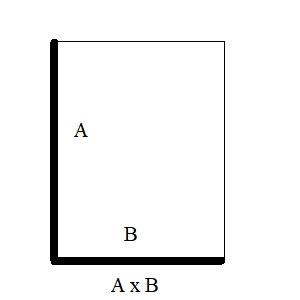 When it comes to figuring out how much insulation you need for the floor, it's as simple as measuring the longest and shortest sides of the floor, following "L" shape measuring method, and then multiplying those numbers together. That gives you the square metres you'll need.
When it comes to figuring out how much insulation you need for the floor, it's as simple as measuring the longest and shortest sides of the floor, following "L" shape measuring method, and then multiplying those numbers together. That gives you the square metres you'll need.
HOW DO I CALCULATE HOW MUCH INSULATION I NEED FOR WALLS?
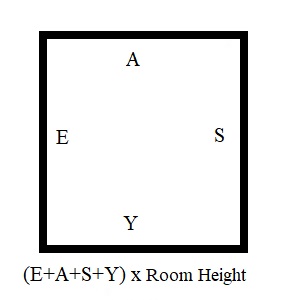 To calculate how much insulation you'll need to warm up your walls, you'll have to add up all the individual wall areas expressed in square metres. It's best to adopt a scheme like A+B+A+B if the room is rectangular, or A+B+C+D if the room has different dimensions. Another easier way is to calculate the perimeter of the room's walls and multiply that number by the room height, following the EASY scheme, which stands for (E+A+S+Y) x Room Height.
To calculate how much insulation you'll need to warm up your walls, you'll have to add up all the individual wall areas expressed in square metres. It's best to adopt a scheme like A+B+A+B if the room is rectangular, or A+B+C+D if the room has different dimensions. Another easier way is to calculate the perimeter of the room's walls and multiply that number by the room height, following the EASY scheme, which stands for (E+A+S+Y) x Room Height.
HOW DO I CALCULATE HOW MUCH INSULATION I NEED FOR CEILING?
 To calculate how much insulation you'll need for your ceiling, you'll have to measure its width and length. If you don't have a ladder and the ceiling mirrors the shape of the floor, measure the floor area. This number will correspond to the square metres needed for ceiling insulation.
To calculate how much insulation you'll need for your ceiling, you'll have to measure its width and length. If you don't have a ladder and the ceiling mirrors the shape of the floor, measure the floor area. This number will correspond to the square metres needed for ceiling insulation.
HOW DO I CALCULATE HOW MUCH INSULATION I NEED FOR AN ATTIC | LOFT?
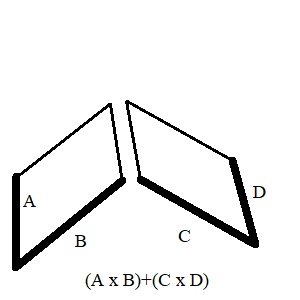 In UK homes, lofts typically have a pitched roof, which means to calculate how much insulation you'll need, you'll have to add together the areas of both sides expressed in square metres. So, measure the longest and shortest sides of the roof pitch, multiply these numbers together, and then add the two numbers together. The resulting number is the amount of square metres you'll need to purchase. Remember that to effectively insulate the loft according to current Building Regulations, you'll likely need a two layers of insulation. This means you'll have to multiply the resulting number by 2.
In UK homes, lofts typically have a pitched roof, which means to calculate how much insulation you'll need, you'll have to add together the areas of both sides expressed in square metres. So, measure the longest and shortest sides of the roof pitch, multiply these numbers together, and then add the two numbers together. The resulting number is the amount of square metres you'll need to purchase. Remember that to effectively insulate the loft according to current Building Regulations, you'll likely need a two layers of insulation. This means you'll have to multiply the resulting number by 2.
HOW TO CALCULATE INSULATION EFFICIENCY
Insulation efficiency is determined by the U-value, which we discussed earlier here. U-values come from the thermal resistance of a structure's components. Once you know the R-values of these materials, you can use them to find the U-value.
To calculate insulation efficiency, just divide 1 by the R-value. The lower the result, the better the insulation. Typically, insulation with an R-value above 4.5 m²K/W is considered very effective. So, if you divide 1 by the R-value of your chosen insulation and get a result higher than 4.5 m²K/W, it means the product will effectively insulate your home.
CONCLUSION
Determining how much insulation you require isn't overly complicated, but calculating the cost per metre of insulation might pose a challenge. However, with a bit of effort and a measuring tape, it's entirely feasible. You won't need fancy online calculators for this task, and you'll be sure to buy the right amount of insulation for your project.
Related articles:
WHAT ARE THE TOP AREAS IN YOUR HOME TO FOCUS ON WHEN INSULATING?
THE DANGERS OF OVER INSULATING YOUR HOME
BEST LOFT INSULATION SOLUTIONS
SHOULD I REMOVE 80 YEARS OLD INSULATION?
HOW TO CUT A PIR INSULATION BOARD?
*Insulationgo LTD strives to keep the content accurate and up-to-date, but we cannot be held responsible for any mistakes or exclusions.
The information in this blog isn't expert advice and shouldn't replace talking to the right specialists. Before buying or deciding anything based on this info, it's best to contact the product manufacturer directly to double-check if it's right for what you need.
Descriptions, drawings, photographs, data, proportions, weights, and measured values provided here may change without prior notice and do not establish the guaranteed contractual quality of the products. The recipient of these products holds the responsibility to comply with proprietary rights, existing laws, and legislation.
Using this blog implies acknowledgment and agreement that Insulationgo LTD cannot be held accountable for any damages, losses, or inconveniences resulting from the use or reliance upon the information provided. This limitation of liability extends to all users of the blog, including visitors, readers, and subscribers.










































































































